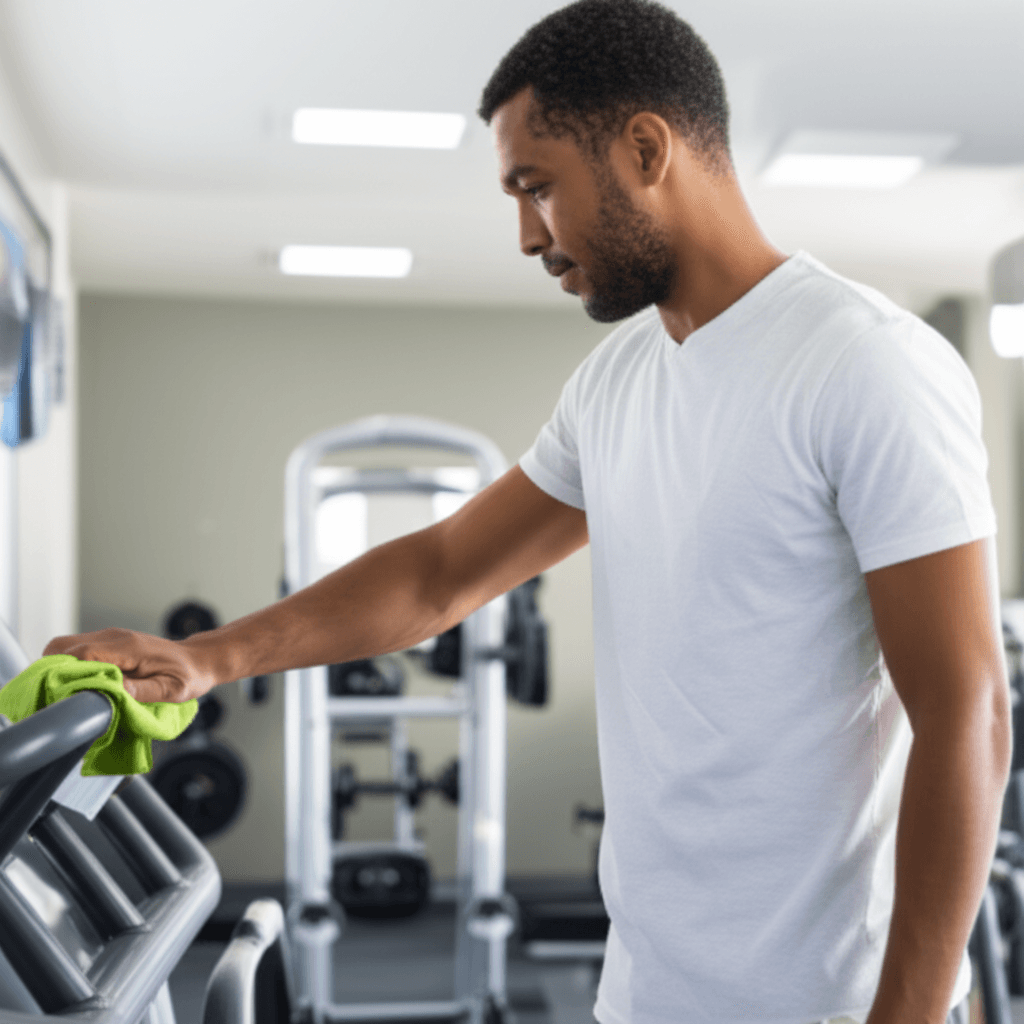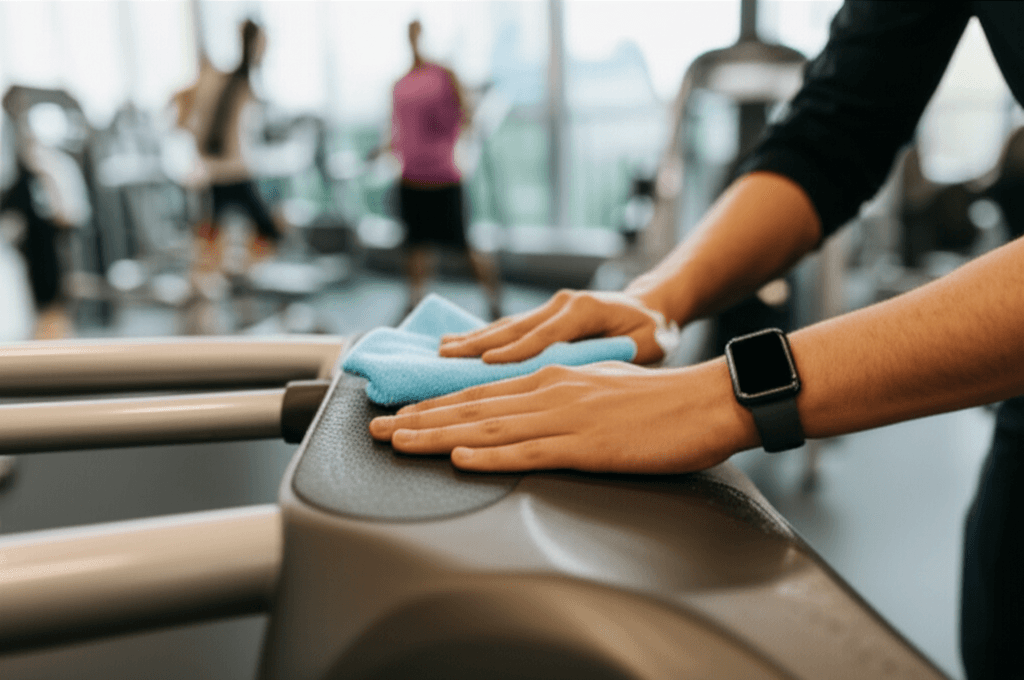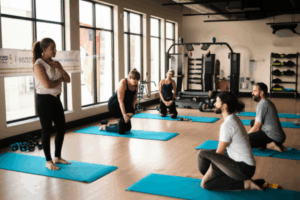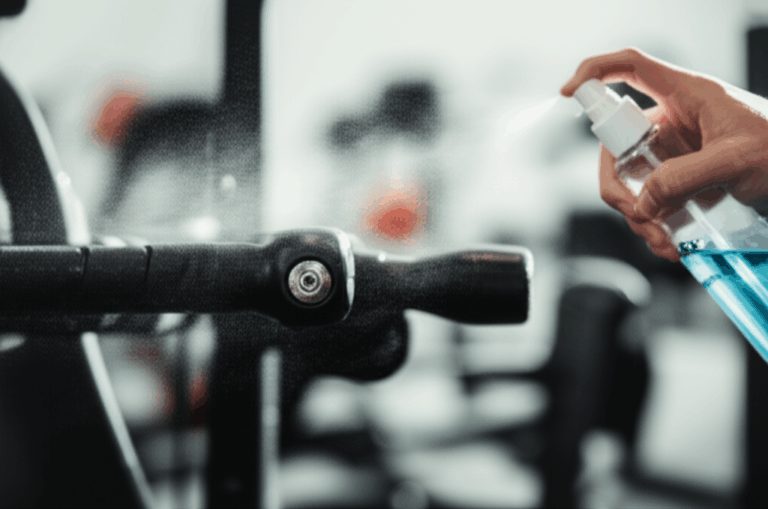Stepping into a gym is often about improving health, but unbeknownst to many, these fitness hubs can also be breeding grounds for illness-causing germs. From bacteria and viruses to fungi, the very equipment designed to make you stronger could be exposing you to a surprising number of microbes, some even more than public toilet seats. Understanding where these germs hide and how to protect yourself is crucial for maintaining your health while pursuing your fitness goals.

Uncovering the Germ Hotspots in Your Gym
Gyms, with their high-touch surfaces, sweat, and shared equipment, create an ideal environment for germs to thrive. Experts highlight several areas and items that are particularly problematic.
High-Touch Equipment: A Breeding Ground
Microbiologist Jason Tetro, known as “The Germ Guy,” explains that the germiest surfaces are those used most frequently. Surfaces like yoga mats, exercise balls, weights, and cardio machine handles are common hotspots for bacteria and viruses. Studies have even indicated that some high-touch gym surfaces may harbor more germs than an average public toilet seat.
- Yoga Mats: Often used for floor exercises, yoga mats absorb sweat and come into direct contact with skin, making them prime spots for microbial growth.
- Exercise Balls: Their textured surfaces can be challenging to clean thoroughly, allowing harmful microbes to linger. Research has shown that over a third of surfaces tested in some gyms were positive for Staphylococcus aureus, especially on exercise balls.
- Weights and Machine Handles: Dumbbells, resistance bands, kettlebells, and machine handles accumulate sweat and oils from hands, necessitating regular cleaning to prevent bacterial spread.
- Cardio Equipment: Treadmill handles, elliptical grips, and stationary bike handlebars are constantly touched, making them common vectors for germ transmission.
Locker Rooms and Showers: Fungal Factories
Locker rooms, showers, and sauna floors are often warm and moist, creating “microclimates that foster fungal and bacterial growth,” according to Kelly Reynolds, a professor at the University of Arizona’s Zuckerman College of Public Health. These environments are particularly conducive to the spread of fungal infections like athlete’s foot and nail fungus (onychomycosis).
Personal Items and Devices
Even personal items brought to the gym can become contaminated. Your smartphone, for instance, can be dirtier than a toilet seat and rapidly collects germs from various surfaces, including gym equipment.

Common Infections You Can Catch at the Gym
The types of pathogens found in gyms can lead to a range of infections, from mild skin irritations to more serious conditions.
Skin Infections
Skin infections are among the most common ailments contracted at the gym due to direct contact with contaminated surfaces and skin-to-skin contact.
- Staphylococcus aureus (Staph) and MRSA: These bacteria can cause skin infections ranging from mild to severe. Methicillin-resistant Staphylococcus aureus (MRSA) is a type of staph bacteria resistant to common antibiotics and can enter the body through cuts, bites, burns, or scrapes, leading to swollen, oozing, painful lesions or boils.
- Ringworm (Tinea Corporis): This contagious fungal infection often appears as an itchy, scaly, ring-shaped rash. It spreads through direct skin-to-skin contact or contact with contaminated objects like towels, clothing, or gym surfaces.
- Athlete’s Foot (Tinea Pedis) and Nail Fungus (Onychomycosis): These fungal infections thrive in warm, damp environments. Walking barefoot in gym showers or locker rooms significantly increases the risk. Athlete’s foot affects the skin of the feet and between the toes, while nail fungus can lead to discoloration, thickening, and separation of the nail.
Respiratory and Other Infections
While skin infections are prevalent, viral particles can also be transmitted, leading to common colds or flu-like symptoms. Poor hygiene can also contribute to the spread of other bacterial infections, which, in severe cases, could lead to pneumonia or septicemia.

Expert Strategies for a Safer Workout
Preventing infections at the gym largely comes down to consistent and diligent hygiene practices. Experts offer several key recommendations.
Pre- and Post-Workout Hygiene
- Wash Your Hands Thoroughly: Always wash your hands with soap and water for at least 20 seconds before and after using the gym. If soap and water aren’t available, use an alcohol-based hand sanitizer with at least 60% alcohol.
- Avoid Touching Your Face: Refrain from touching your face, especially your eyes, nose, and mouth, during workouts to prevent the hand-to-face transfer of pathogens.
- Wipe Down Equipment: Kelly Reynolds advises wiping down equipment before and after use with EPA-approved disinfectant wipes or sprays. Ensure the surfaces remain wet for the recommended contact time to effectively kill germs.
Personal Item Preparedness
- Bring Personal Gear: To reduce contact with shared, hard-to-clean surfaces, bring your own yoga mats, towels, and gloves.
- Wear Flip-Flops in Wet Areas: Always wear flip-flops or shower shoes in locker rooms and showers to prevent fungal infections.
- Don’t Share Personal Items: Avoid sharing towels, razors, water bottles, or other personal items that come into contact with your skin or mouth.
- Cover Open Wounds: Cover any open wounds or cuts to prevent bacteria like Staph from entering your body.
Smart Scheduling and Awareness
- Choose Less Crowded Hours: If possible, schedule your workouts during less crowded times to avoid peak contamination periods.
- Stay Home When Sick: If you’re feeling ill, stay home to prevent spreading pathogens to others.
- Clean Your Phone: Regularly disinfect your smartphone, as it can harbor a significant number of germs. Use disinfectant wipes with 70% isopropyl alcohol or a UV light sanitizer.

Gym Etiquette: A Collective Responsibility
While individual hygiene is paramount, a collective commitment to cleanliness within the gym community significantly reduces infection risks. Gyms should provide accessible sanitizers and maintain proper cleaning routines. As Jagdish Khubchandani, a professor of public health, notes, “Frequently, we are also the victims of the behaviors of others, so clean surfaces before using them.”
By being mindful of the germiest spots and consistently practicing good hygiene, you can significantly reduce your risk of infection, ensuring your gym routine contributes to a healthier you, not a sicker one.







